Bracelet Clasps – A History and Style Lesson
Bracelets come with lots of different types of clasps, which vary in the ease of operation, security, and functionality. The clasp on a particular bracelet is one of the clues that I use when verifying the period of a charm bracelet. That method isn't always reliable because sometimes an older bracelet may have had the clasp replaced with a newer style, or vice versa, but it's a good starting point.
It's also a handy way to spot reproductions and fakes when shopping on the internet. There are lots of folks that have little to no knowledge of vintage jewelry and often misrepresent the items they are selling. The clasp on a charm bracelet is one of the things I take into account when shopping on line.
I decided to take some photos and do a few mini posts with some descriptive points and a little history lesson behind some different bracelet clasps.
Traditional Spring Ring Clasp - The most common type of clasp, which has a little spring inside the round shape of the clasp which allows it to open and close. The spring ring clasp was invented in the early 20th century. Jewelry older than 1900 will not have a spring ring clasp. (Photo coming tomorrow)
Lobster Clasp - A variation on a spring ring that's slightly elongated and sturdier. The lobster clasp came into use in the late 1970s. Lobster clasps are named because of their "pinching" character, and are shaped like a lobster's claw.
Sister Hook Clasp - Typical of bracelets made in the 1930s & 1940s, this rectangular clasp has two overlapping hooks that open in opposite directions and close when linked with the ring the other end of the bracelet. There are modern variations that are rounder than the old fashioned rectangular designs.
Read more - Charm Bracelet Clasps – A History and Style Lesson Part II
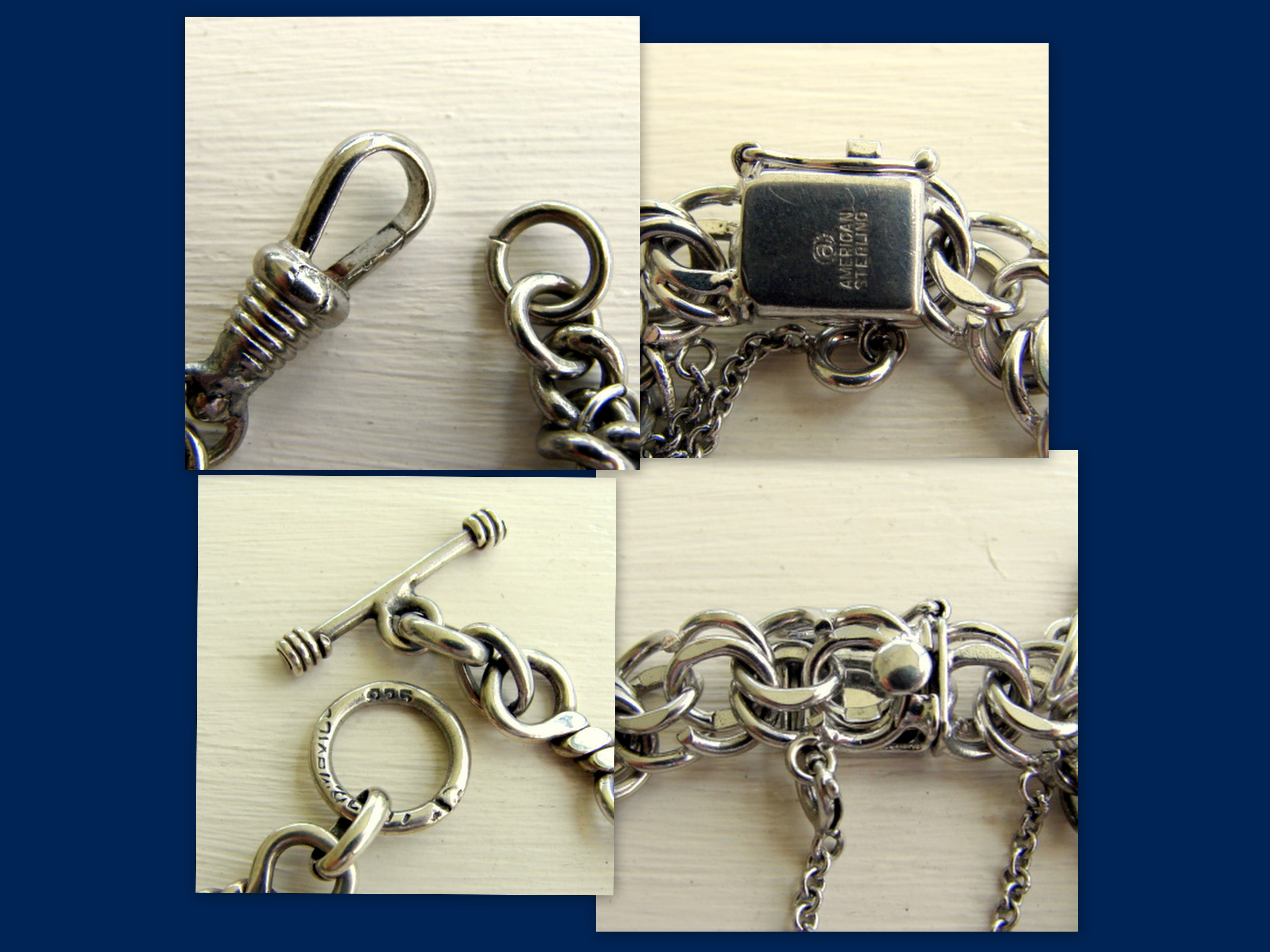
More from my site
Category: All About Old Jewelry

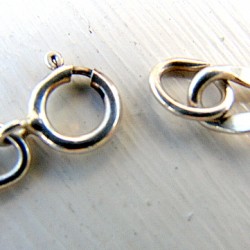
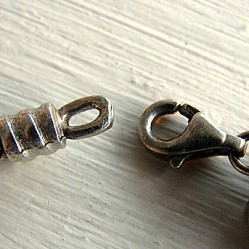
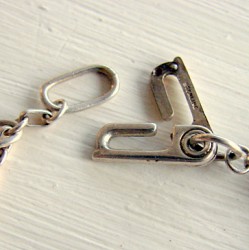
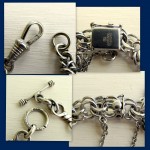
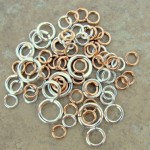
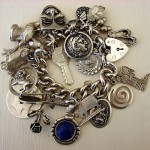






I have an older necklace with a spring ring clasp but it never had the little tab, only a slight lip to pull it open. Do you know when this was used? I can’t seem to find anything that dates this particular clasp.
Thanks,
Molly
Hi Molly, I have several of those and I like them much better than the regular spring ring clasps. I don’t have any information about them though but I’ll see what I can find out from my charm collecting friends.
Hi there,
I’m wondering what kind of clasp you might think would be best for a nice charm bracelet, similar to pandoras clasp. The significant difference is of course that the beads can pass over one end, so it is no thicker than the bracelet itself? Any toughts on this?
Thanks,
Al
I found a bracelet at an estate that appears to be pot metal or low quality silver and enamel, with a latch that is two half tubes and a pin that goes through to fasten it. I’ve never seen a latch like this before. Do you know anything about the type?
Thank you.
A friend of mine has a bracelet with a pin clasp. The two tubes have alternating sections that line up and then a pin slips through the middle. I keep telling her to let me buy that bracelet from her because I haven’t seen a clasp like that before but she keeps making excuses. 🙂 If I can borrow it I’ll take a photo and post it here on my blog. I don’t know the correct term for it, I just call it a pin clasp.
I have a bronze bracelet with a pin clasp like that. The pin slides out very easily. Is there any way to prevent this from happening? I believe that the pin itself is brass.
I have a pin clasp bracelet that has an extra attachment part that attaches to the bracelet. What era is this clasp from??? Mine used to look black until I polished it up and. Now some areas are bright gold. Not yellow… But looks like 14k. Other areas look more silver. What is it? I’ve had it for years and years and never knew!
Where can i purchase the sister clasps please? I have arthritis in my hands and i used my mom’s clasp from her bracelet from the nursing home. Thank you.
They aren’t for sale individually as far as I know. The one’s I have are attached to vintage bracelets that’s I’ve bought online or at antique shops. Thanks for your question.